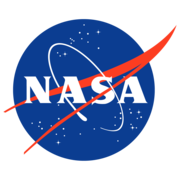Liliea
The Living Force
While the stable beams are back at the accelerator and Large Hadron Collider at CERN, to get in tune with the twilight landscape of April 8 where they are expected to produce physical collisions, NASA is not far behind, as they expect to launch 3 rockets into the stratosphere to measure particle perturbations (they do not explain what kind):
NASA to Launch Sounding Rockets into Moon’s Shadow During Solar Eclipse.
The truth is that these puerile explanations given by Nasa about this experiment and this way of hiding information about this eclipse from the general population in the media to create obfuscation is incredible; this may be a good sign that change is coming and that we should be prepared and happy against all odds. At least that's how I feel right now..

 science.nasa.gov
science.nasa.gov

 home.cern
home.cern
NASA to Launch Sounding Rockets into Moon’s Shadow During Solar Eclipse. 
NASA will launch three sounding rockets during the total solar eclipse on April 8, 2024, to study how Earth’s upper atmosphere is affected when sunlight momentarily dims over a portion of the planet.
The Atmospheric Perturbations around Eclipse Path (APEP) sounding rockets will launch from NASA’s Wallops Flight Facility in Virginia to study the disturbances in the ionosphere created when the Moon eclipses the Sun. The sounding rockets had been previously launched and successfully recovered from White Sands Test Facility in New Mexico, during the October 2023 annular solar eclipse. They have been refurbished with new instrumentation and will be relaunched in April 2024. The mission is led by Aroh Barjatya, a professor of engineering physics at Embry-Riddle Aeronautical University in Florida, where he directs the Space and Atmospheric Instrumentation Lab.
The sounding rockets will launch at three different times: 45 minutes before, during, and 45 minutes after the peak local eclipse. These intervals are important to collect data on how the Sun’s sudden disappearance affects the ionosphere, creating disturbances that have the potential to interfere with our communications.
It’s often difficult to study short-term changes in the ionosphere during an eclipse with satellites because they may not be at the right place or time to cross the eclipse path. Since the exact date and times of the total solar eclipse are known, NASA can launch targeted sounding rockets to study the effects of the eclipse at the right time and at all altitudes of the ionosphere.
No doubt about it. Someone is conveniently trying to misinform because according to NASA they are doing this experiment because they know the trajectory, the time, the right place where the shadow is and they can send their rockets.This year is shaping up to be the year of disbelief and confusion, I have had several already.
The truth is that these puerile explanations given by Nasa about this experiment and this way of hiding information about this eclipse from the general population in the media to create obfuscation is incredible; this may be a good sign that change is coming and that we should be prepared and happy against all odds. At least that's how I feel right now..

NASA to Launch Sounding Rockets into Moon’s Shadow During Solar Eclipse
NASA will launch three sounding rockets during the total solar eclipse on April 8, 2024, to study how Earth’s upper atmosphere is affected when sunlight momentarily dims over a portion of the planet. The Atmospheric Perturbations around Eclipse Path (APEP) sounding rockets will launch from...
Accelerator Report: Protons or Easter eggs? Let’s hope for both
Beam commissioning is progressing well across the entire accelerator complex, with initial completion achieved in the first machines of the chain. Last week, the first physics experiments started in the East Area, behind the PS, and others will follow suit shortly. A...



